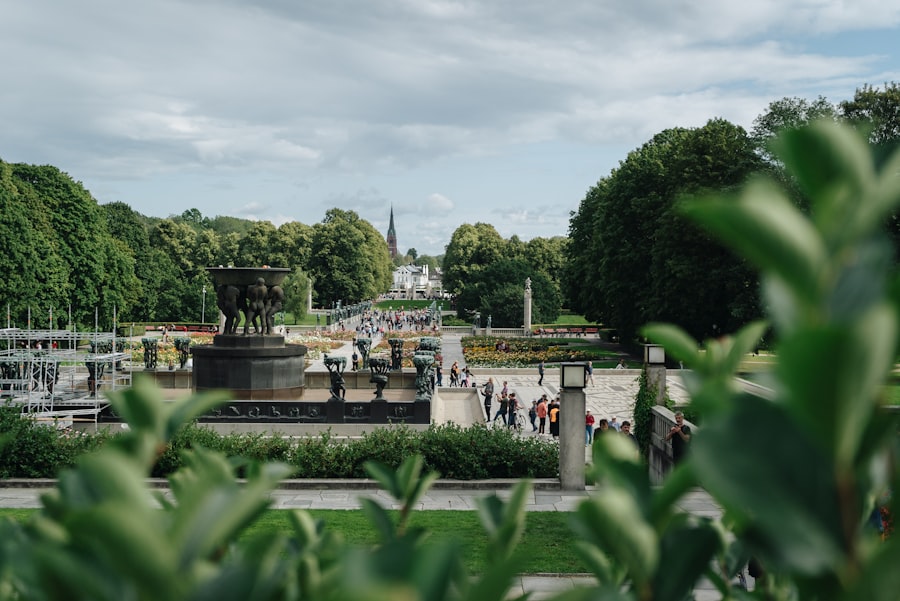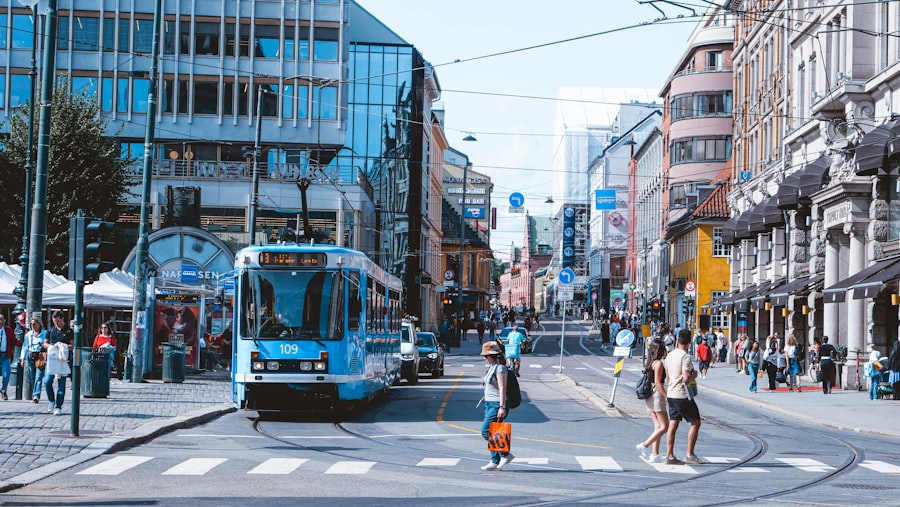Norwegian beer and aquavit are two quintessential elements of Norway’s rich cultural tapestry, each offering a unique glimpse into the country’s traditions and social customs. Beer, with its deep-rooted history in Norwegian society, has evolved over centuries, while aquavit, a traditional spirit flavoured with herbs and spices, holds a special place in the hearts of Norwegians. Together, they represent not just beverages but also a way of life, embodying the spirit of conviviality and celebration that characterises Norwegian culture.
As you delve into the world of Norwegian beer and aquavit, you will discover a diverse array of flavours and styles that reflect the country’s natural bounty. From the crisp, refreshing lagers brewed in the fjords to the robust ales crafted in the northern regions, each sip tells a story of the land and its people. Similarly, aquavit, often enjoyed during festive occasions, is steeped in tradition and is an integral part of Norwegian culinary heritage.
This article will explore the fascinating history, production methods, and cultural significance of these beloved beverages. Take the first step. Book a consultation with the Norway Relocation Group for your move to Norway.
Summary
- Norwegian beer and aquavit are an integral part of Norwegian culture, with a rich history and diverse range of products.
- Brewing in Norway has a long history dating back to the Viking age, with traditional brewing methods still being used today.
- Norwegian beer comes in various styles, including pale ale, pilsner, and traditional farmhouse ale, each with its own unique characteristics.
- Traditional Norwegian aquavit is a distilled spirit flavoured with herbs and spices, and is typically enjoyed as a digestif.
- Norwegian beer and aquavit can be paired with a variety of foods, enhancing the dining experience and showcasing the versatility of these beverages.
The History of Brewing in Norway
The history of brewing in Norway can be traced back to ancient times when early Norwegians brewed beer using simple ingredients such as barley, water, and herbs. Archaeological findings suggest that beer was consumed during significant events and rituals, highlighting its importance in social gatherings. By the Middle Ages, brewing had become more sophisticated, with monasteries playing a pivotal role in developing brewing techniques.
Monks were known for their brewing skills, producing high-quality beer that was enjoyed by both locals and travellers. As time progressed, the brewing landscape in Norway underwent significant changes. The introduction of new ingredients and brewing methods from Europe led to a diversification of beer styles.
However, the 19th century brought challenges as industrialisation took hold, leading to the establishment of large breweries that dominated the market. Despite this shift, small-scale brewing persisted in rural areas, preserving traditional recipes and methods. Today, Norway boasts a vibrant brewing scene that marries historical practices with modern innovation, resulting in a rich tapestry of flavours and styles.
The Different Types of Norwegian Beer

Norwegian beer is characterised by its diversity, with various styles reflecting regional preferences and brewing traditions. One of the most popular types is “pilsner,” a light and crisp lager that has gained widespread acclaim both domestically and internationally. Pilsners are often brewed with locally sourced ingredients, resulting in a refreshing beverage perfect for enjoying during long summer days.
Another notable style is “bitter,” which is known for its hoppy bitterness and robust flavour profile. This style has its roots in British brewing traditions but has been adapted by Norwegian brewers to incorporate local ingredients. Additionally, “stout” and “porter” have gained popularity in recent years, with many craft breweries experimenting with dark malts and unique flavourings such as coffee and chocolate.
In addition to these mainstream styles, Norway is home to several traditional beers that are often brewed for special occasions. “Juleøl,” or Christmas beer, is a seasonal favourite that features rich malt flavours and warming spices, making it a perfect companion for festive feasts. Similarly, “sider,” or cider, made from fermented apples or pears, has seen a resurgence in popularity as consumers seek out locally produced beverages.
Traditional Norwegian Aquavit and Its Production
Aquavit is a distinctive spirit that has been an integral part of Norwegian culture for centuries. Traditionally distilled from grain or potatoes, aquavit is flavoured with a variety of herbs and spices, with caraway being the most common. The production process involves distilling the base ingredient before infusing it with botanicals, resulting in a spirit that is both aromatic and complex.
The art of aquavit production is steeped in tradition, with many distilleries adhering to age-old recipes passed down through generations. Some aquavits are aged in wooden casks, which imparts additional flavours and character to the spirit. The ageing process can vary significantly; some aquavits are aged for just a few months, while others may mature for several years before being bottled.
Aquavit is often enjoyed as a celebratory drink during festive occasions such as Christmas and weddings. It is typically served chilled in small glasses and is often accompanied by traditional Norwegian dishes such as herring or cured meats. The ritual of toasting with aquavit is an essential part of Norwegian dining culture, symbolising camaraderie and shared joy.
Pairing Norwegian Beer and Aquavit with Food
Pairing Norwegian beer and aquavit with food can elevate any dining experience, enhancing both the flavours of the beverages and the dishes served alongside them. When it comes to beer pairings, lighter styles such as pilsners work exceptionally well with seafood dishes like grilled salmon or shrimp cocktails. The crispness of the beer complements the delicate flavours of the fish while cleansing the palate between bites.
For heartier fare such as reindeer stew or lamb dishes, darker beers like stouts or porters are ideal companions. Their rich malt profiles can stand up to robust flavours while adding depth to the overall dining experience. Additionally, traditional Norwegian cheeses can be beautifully paired with various beer styles; for instance, a creamy blue cheese pairs wonderfully with a hoppy IPA.
Aquavit also shines when paired with food. Its herbal notes make it an excellent match for cured fish dishes like gravlaks or smoked salmon. The spirit’s complexity enhances the flavours of these dishes while providing a refreshing contrast.
Furthermore, aquavit can be enjoyed alongside traditional Norwegian open-faced sandwiches (smørbrød), where its aromatic qualities complement the various toppings.
The Best Places to Experience Norwegian Beer and Aquavit

To truly appreciate Norwegian beer and aquavit, one must explore the best places where these beverages are celebrated. In Oslo, numerous bars and restaurants offer extensive selections of local brews and spirits. One such establishment is “Schouskjelleren Mikrobryggeri,” a microbrewery located in an old cellar that serves an array of house-brewed beers alongside carefully curated selections from other local breweries.
For those seeking an authentic aquavit experience, “Lofoten Fiskerestaurant” is a must-visit destination. This restaurant not only serves exquisite seafood dishes but also boasts an impressive collection of aquavit from various regions of Norway. Diners can enjoy tasting flights that showcase different styles and flavours while savouring fresh catches from the surrounding waters.
Beyond Oslo, Norway’s picturesque fjords offer unique opportunities to sample local brews and spirits. Many small breweries dot the landscape, often situated near stunning natural vistas. Visiting these breweries allows you to witness the brewing process firsthand while enjoying tastings amidst breathtaking scenery.
The Role of Beer and Aquavit in Norwegian Culture
Beer and aquavit play significant roles in shaping Norwegian culture and social life. They are not merely beverages but symbols of togetherness and celebration. In Norway, it is customary to raise a glass during special occasions such as birthdays, weddings, and holidays like Midsummer or Christmas.
These rituals foster connections among family and friends while honouring traditions that have been passed down through generations. Moreover, beer festivals have become increasingly popular across Norway, showcasing local breweries and their offerings. These events provide an opportunity for enthusiasts to gather, share stories, and discover new flavours while celebrating their love for craft beverages.
Similarly, aquavit tastings often accompany traditional feasts during festive seasons, reinforcing its status as a cherished part of Norwegian culinary heritage. The cultural significance of these beverages extends beyond mere consumption; they are intertwined with Norway’s identity as a nation that values community and connection. Whether enjoyed at home or in lively public gatherings, beer and aquavit serve as conduits for storytelling and shared experiences.
How to Properly Serve and Enjoy Norwegian Beer and Aquavit
Serving Norwegian beer and aquavit correctly enhances the overall drinking experience. For beer enthusiasts, it is essential to pour beer into clean glasses at an angle to create an appropriate head without excessive foam. Each style may have its ideal serving temperature; for instance, lagers are best enjoyed chilled while ales may be served slightly warmer to allow their flavours to develop fully.
When it comes to aquavit, serving it chilled is paramount; many Norwegians prefer to keep their aquavit in the freezer before serving it in small shot glasses. This practice not only enhances its refreshing qualities but also allows the intricate flavours to shine through without being overwhelmed by warmth. Enjoying these beverages is as much about the experience as it is about taste.
Taking time to savour each sip while engaging in conversation adds depth to the enjoyment. Whether you are at a bustling bar or sharing a meal at home with loved ones, embracing the moment enhances your appreciation for these traditional drinks.
Popular Norwegian Beer and Aquavit Brands
Several brands have emerged as favourites among locals and visitors alike when it comes to Norwegian beer and aquavit. On the beer front, “Ringnes” is one of Norway’s oldest breweries, known for its classic pilsner that has become synonymous with Norwegian lager culture. Another notable brand is “Nøgne Ø,” which has gained international acclaim for its innovative craft beers that push boundaries while celebrating local ingredients.
In terms of aquavit, “Linie Aquavit” stands out as one of Norway’s most famous brands. This spirit undergoes a unique maturation process where it is shipped across the equator twice before being bottled—an adventure that imparts distinct flavours influenced by different climates along the journey. Another beloved brand is “Gammel Opland,” which offers a traditional taste profile that resonates deeply with Norwegians.
These brands represent just a fraction of what Norway has to offer regarding beer and aquavit; countless microbreweries continue to emerge across the country, each contributing its unique flair to this vibrant beverage scene.
The Growing Craft Beer and Aquavit Scene in Norway
In recent years, Norway has witnessed an explosion in craft beer production as passionate brewers experiment with new styles and flavours while honouring traditional methods. This burgeoning craft scene has led to an increased appreciation for locally sourced ingredients—many breweries prioritise using native grains and hops to create distinctive brews that reflect their surroundings. Similarly, the craft aquavit movement has gained momentum as distillers explore innovative flavour combinations beyond traditional caraway-infused recipes.
Many craft distilleries now experiment with botanicals such as dill or citrus peels—creating unique expressions that appeal to adventurous palates seeking something beyond conventional offerings. This growth reflects a broader trend towards sustainability within Norway’s beverage industry; many craft producers prioritise environmentally friendly practices while supporting local farmers through sourcing ingredients responsibly.
Tips for Bringing Norwegian Beer and Aquavit Home
For those wishing to take a piece of Norway home with them, bringing back beer and aquavit can be an exciting endeavour—albeit one that requires some planning due to regulations surrounding alcohol transport across borders. It’s advisable first to check your home country’s customs regulations regarding alcohol imports before purchasing any beverages. When selecting beers for transport, opt for bottles rather than cans; glass bottles tend to retain flavour better over time compared to canned options which may impart metallic notes if stored improperly.
Additionally, consider purchasing smaller quantities—this not only makes transport easier but also allows you to sample various styles without overwhelming your luggage space. As for aquavit enthusiasts looking to bring home this cherished spirit—many distilleries offer beautifully packaged bottles perfect for gifting or personal enjoyment upon return home. Just remember always to pack your bottles securely within your luggage to prevent breakage during transit.
In conclusion, exploring Norwegian beer and aquavit offers an enriching experience that delves into Norway’s cultural heritage while celebrating its culinary delights. From understanding brewing traditions to discovering unique flavour profiles—each sip invites you deeper into this captivating world where community bonds flourish over shared drinks. And if you’re inspired by this journey into Norway’s beverage scene—consider enhancing your experience further by learning the language at NLS Norwegian Language School in Oslo!
Their comprehensive courses will not only help you navigate conversations about these beloved drinks but also immerse you fully in all aspects of Norwegian culture during your visit!
Learn more about the Norwegian classes at the NLS Norwegian Language School in Oslo

